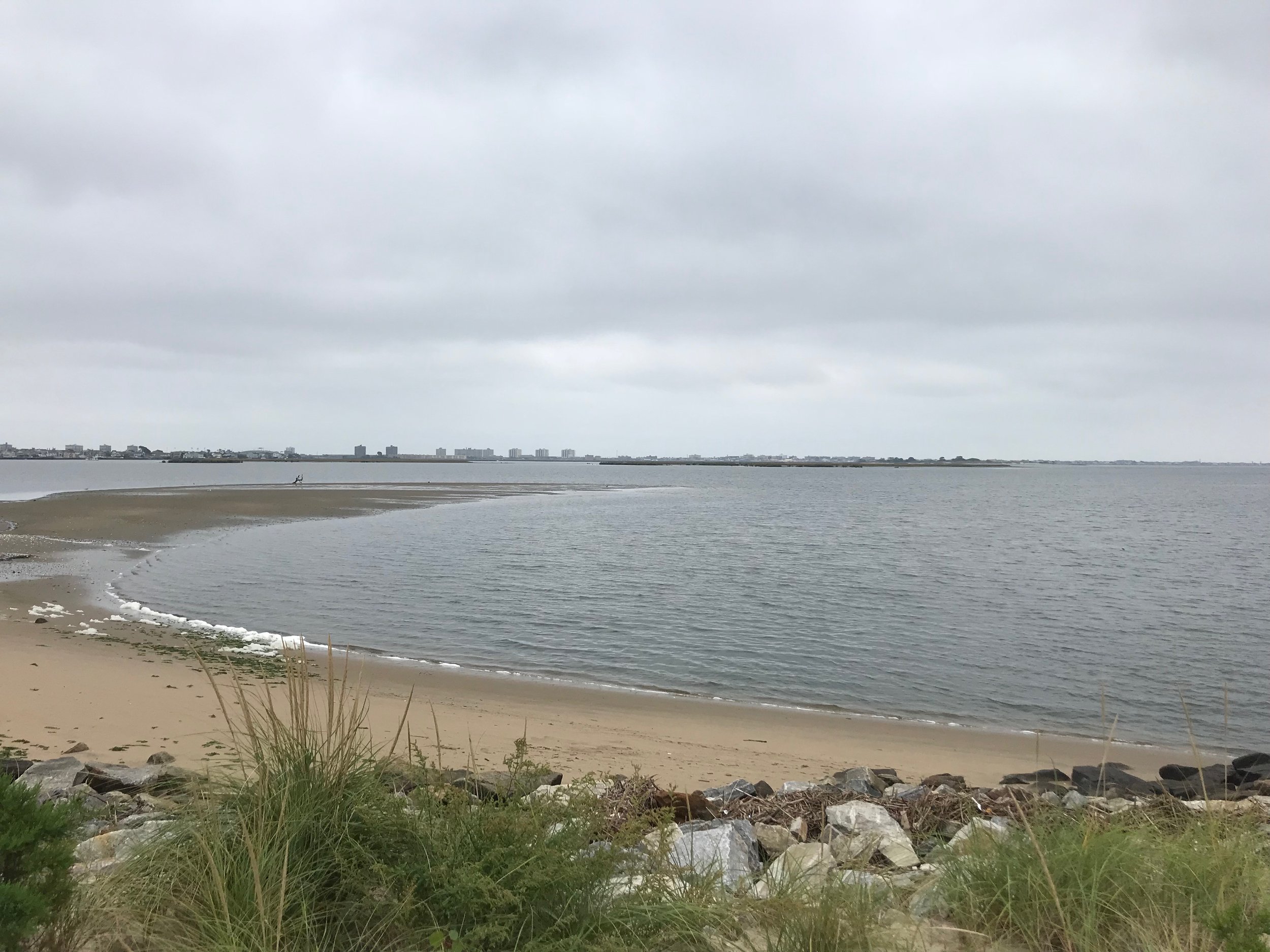Giant Storm Barriers in NYC Could Put Our Communities At Risk
/By Kimberly Ong, Esq. and Rob Friedman
Eagle Op-Ed Contributors
Hurricane Michael is the latest monster storm to rip into the coastal United States; one of a string of hurricanes that have brought destruction to countless communities—from here in Queens to Florida, Puerto Rico and beyond. And as a new global report by the United Nations’ climate panel warned last week, these storms will continue to pummel our communities unless we change course, and quickly.
Climate change is real, it is here, and it is already harming New York City.
Temperatures and sea levels are rising, the intensity of tropical storms and hurricanes are increasing that are leading to more flooding and storm surges in a city that has 520 miles of vulnerable waterfront and many low-lying neighborhoods.
Photo caption: Jamaica Bay as seen from the Jamaica Bay Wildlife Refuge. Photo credit: Eagle photo by Jonathan Sperling.
If Superstorm Sandy was any indication, we need to act swiftly to protect New York City from the worst of these effects.
In an attempt to shield the New York City metropolitan area from climate change-related storm surges, the federal government is crafting a plan that could include the construction of one or more massive offshore storm surge barriers—giant in-water gates—that are intended to serve as barricades against incoming seawater during storms.
It seems reasonable enough—build a wall to keep out the stuff we don’t want. But, in reality, this strategy could do more harm than good.
Few details of the plan, prepared by the US Army Corps of Engineers, have been provided to the public, so it’s hard to know just what the scheme would entail.
Indeed, we still don’t know basic, but critical specifics about this undertaking—like how tall the proposed barriers would be or where exactly they’d be located. But, we have reason to worry that these massive offshore storm surge barriers could lead to increased flooding in parts of Queens and alter the ecosystems of the many bodies of water in and around New York City.
Offshore storm surge barriers could worsen flooding in communities adjacent to the barriers—during a storm, seawater hits the barriers and has no place to go but to flood nearby communities outside of the barrier.
Depending upon the final barrier location and design, Bayside, Bay Terrace, Douglaston, Little Neck, Long Island City, East Elmhurst and Breezy Point are among the neighborhoods that could face increased flooding risks if the barriers are erected.
Offshore storm surge barriers could also damage our waterways, changing the natural flow of water between the Hudson and East Rivers, Long Island Sound, Jamaica Bay and the Atlantic Ocean, causing sewage, contaminants and other pollution to accumulate along our waterfronts. Such barriers also risk restricting the habitats and migratory runs of native fish, potentially harming native species of all types, from the barnacle to the bottlenose dolphin to the endangered Atlantic Sturgeon.
What’s more, storm surge barriers are exceedingly expensive, with price tags that start in the billions of dollars.
Making New York and New Jersey's coastlines more resilient to storm surges doesn't have to mean sacrificing the health and safety of our neighborhoods or our favorite bodies of water. Before racing to advance giant storm-surge barriers, why not maximize our efforts to complete more cost-effective onshore coastal protection measures?
More stringent zoning ordinances and building codes can prevent new development from being built in vulnerable, low-lying areas and ensure that new structures and major redevelopment are more resilient, among other sensible steps. And retrofitting existing buildings and critical transportation, electrical and communications networks increases their ability to handle flooding and other effects of extreme weather.
Further, as NRDC has advocated, taking advantage of the buffering ability of natural defenses by protecting and restoring wetlands in places like Jamaica Bay and building more dunes in places like the Rockaways, along with systems of dikes, levees and other shoreline construction, can protect against storm surges and sea level rise, reducing loss of life and property damage.
On top of all this, we cannot just treat the symptoms of climate change—we also need to treat the underlying problem by significantly reducing climate pollution. We must do this by improving energy efficiency, moving to renewable energy, and ending our deadly addiction to dirty fossil fuels.
Building a huge barrier to keep out the ocean sounds appealing in its simplicity. Unfortunately, solutions to complex problems like climate change are rarely so simple. And as the levee failures in New Orleans during Hurricane Katrina demonstrated, the perils of relying too heavily on a single solution can be catastrophic.
The results of the Army Corps project could affect more than 16 million people living in the New York metro area and cost the region billions of dollars. It is up to us—Queens residents—to safeguard our homes and the places we love, so that when the next storm hits, our communities are protected. Make your voice heard: https://www.nrdc.org/protectqueens.
Kimberly Ong is a staff attorney at the Natural Resources Defense Council and lives in Douglaston. Rob Friedman is a policy advocate at the Natural Resources Defense Council and lives in Sunnyside.




